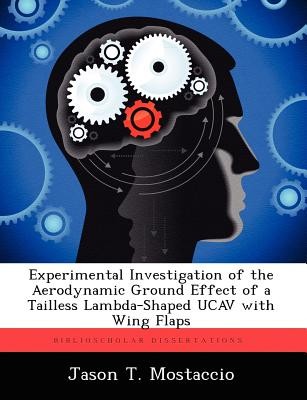
- We will send in 10–14 business days.
- Author: Jason T Mostaccio
- Publisher: BiblioScholar
- ISBN-10: 1249593999
- ISBN-13: 9781249593997
- Format: 18.9 x 24.6 x 1.1 cm, minkšti viršeliai
- Language: English
- SAVE -10% with code: EXTRA
Experimental Investigation of the Aerodynamic Ground Effect of a Tailless Lambda-Shaped Ucav with Wing Flaps (e-book) (used book) | bookbook.eu
Reviews
Description
This experimental study adequately identified the ground effect region of a lambda-shaped unmanned combat air vehicle (UCAV). The lambda planform used in this study was originally tested in a previous experiment to determine the stability and control characteristics generated out-of-ground-effect. The following study extends the existing database by analyzing the inherent aerodynamic behavior that is produced by employing trailing edge flap deflections while flying in-ground-effect (IGE). To accomplish this objective, static ground effect tests were performed in the AFIT 3' x 3' subsonic wind tunnel where a ground plane was used to simulate the forces and moments on the UCAV IGE. Removable aluminum flap pieces were attached to the model, in a split flap configuration, along the midboard and outboard trailing edges of the UCAV, and the corresponding IGE data was collected for symmetric and asymmetric deflections of +10o and +20o. Based on the results of this study, the ground effect region for the lambda UCAV, with flaps deployed was characterized by an increase in the lift, a reduction in the induced drag but an increase in the overall drag, and an increase in the lift-to-drag ratio. These trends were noted in previous ground effect studies for aircraft with trailing edge flaps, and similar aspect ratios and wing sweep. Additionally, a flow visualization analysis revealed that a vortical flow pattern, that is characteristic of delta wing configurations, developed over the upper surface of the wing at high angles of attack.
EXTRA 10 % discount with code: EXTRA
The promotion ends in 21d.21:16:31
The discount code is valid when purchasing from 10 €. Discounts do not stack.
- Author: Jason T Mostaccio
- Publisher: BiblioScholar
- ISBN-10: 1249593999
- ISBN-13: 9781249593997
- Format: 18.9 x 24.6 x 1.1 cm, minkšti viršeliai
- Language: English English
This experimental study adequately identified the ground effect region of a lambda-shaped unmanned combat air vehicle (UCAV). The lambda planform used in this study was originally tested in a previous experiment to determine the stability and control characteristics generated out-of-ground-effect. The following study extends the existing database by analyzing the inherent aerodynamic behavior that is produced by employing trailing edge flap deflections while flying in-ground-effect (IGE). To accomplish this objective, static ground effect tests were performed in the AFIT 3' x 3' subsonic wind tunnel where a ground plane was used to simulate the forces and moments on the UCAV IGE. Removable aluminum flap pieces were attached to the model, in a split flap configuration, along the midboard and outboard trailing edges of the UCAV, and the corresponding IGE data was collected for symmetric and asymmetric deflections of +10o and +20o. Based on the results of this study, the ground effect region for the lambda UCAV, with flaps deployed was characterized by an increase in the lift, a reduction in the induced drag but an increase in the overall drag, and an increase in the lift-to-drag ratio. These trends were noted in previous ground effect studies for aircraft with trailing edge flaps, and similar aspect ratios and wing sweep. Additionally, a flow visualization analysis revealed that a vortical flow pattern, that is characteristic of delta wing configurations, developed over the upper surface of the wing at high angles of attack.


Reviews